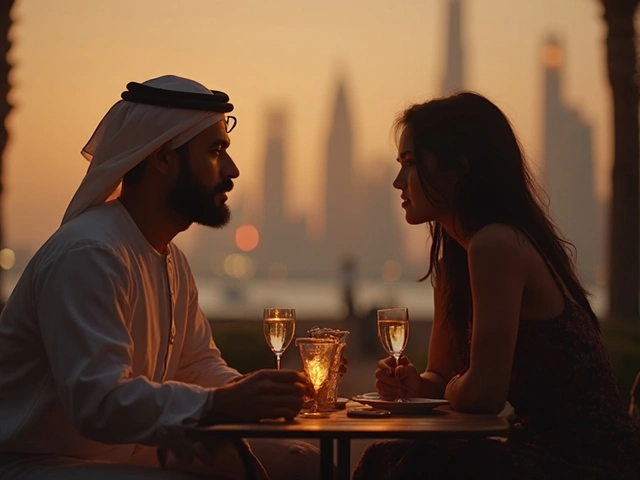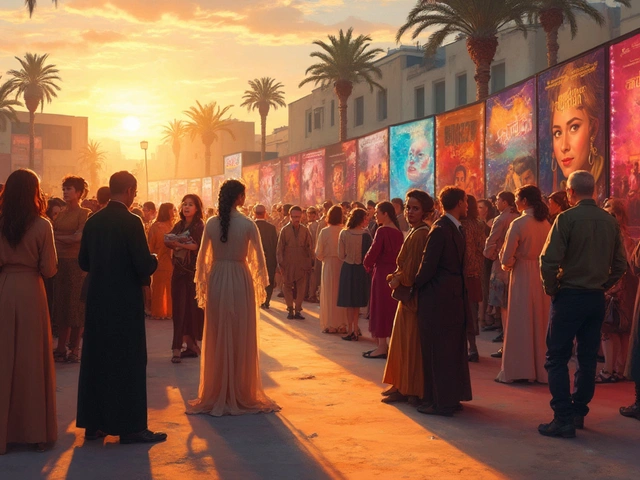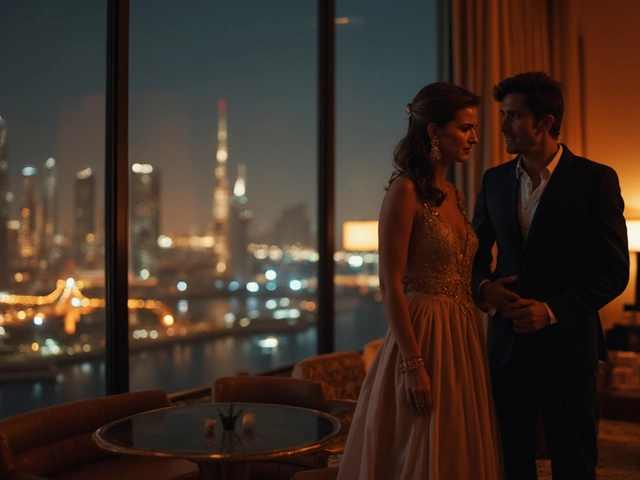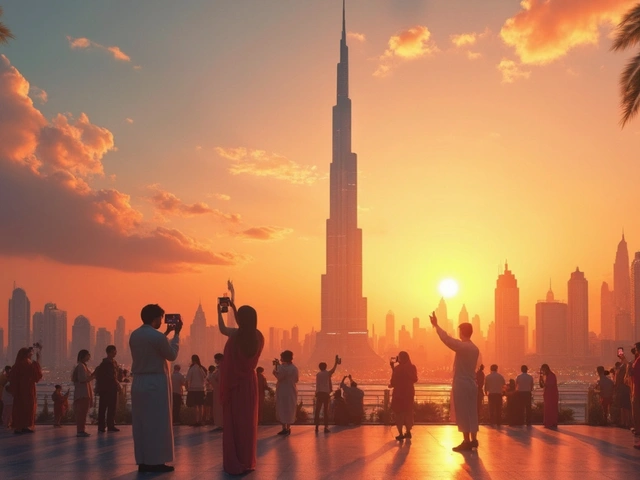The sight of the Burj Khalifa shimmering at sunset or the sail-shaped Burj Al Arab lighting up the Persian Gulf isn’t just Dubai showing off how bold it can get with architecture. It’s also a sign of how Dubai, with its year-round sun and relentless ambition, is racing headfirst into sustainable building practices. For a city that used to be all about grand launches and luxury, it’s pretty wild to see sustainability—once seen as a side dish—becoming the main event. Dubai isn’t just installing motion-sensor lights and calling it a day. The city is reimagining what its landmarks can be, not just for show, but as real solutions for a greener future. Anyone living here knows how energy-guzzling towers and nonstop air-conditioning can stack up. So, what’s Dubai actually doing to make its iconic skyline cleaner and smarter for this generation and the next?
The Evolution of Green Building in Dubai
Rewind the clock a decade, and you’d struggle to find buildings in Dubai boasting green credentials. It was all about size, luxury, and out-of-this-world comforts—the bigger, the better. Fast-forward to today and every major Dubai real estate developer, from Emaar to Meraas and Nakheel, is pitching eco-friendly design not as a bonus, but as a must-have. Why? Because Dubai’s government got serious. Back in 2011, the Dubai Municipality rolled out the "Green Building Regulations and Specifications". What started with a few guidelines is now a system that all new buildings must follow, making the city’s construction scene almost unrecognizable from before.
You see it in the Dubai Frame, which went for solar power right from the start, or the Museum of the Future, which pushed the envelope with 45% energy savings compared to older buildings. Even hotels—like the Jumeirah Al Naseem—are upgrading with low-flow water fixtures and recycling stations in guest rooms. These tweaks may sound small, but when you're dealing with a metropolis that has thousands of skyscrapers, it adds up fast.
But it’s not just about new buildings. Dubai’s challenge is that most of its energy goes into keeping people cool. Locals and expats know that summer means air conditioning running 24/7, so making old towers energy-efficient has become big business. Retrofitting, or upgrading existing buildings to improve their green score, is a booming trend. Dubai’s Retrofitting Program, launched as part of the Dubai Clean Energy Strategy 2050, covers everything from energy-efficient chillers at shopping malls to smart thermostats in office blocks on Sheikh Zayed Road. There are government incentives for businesses and building owners doing this, making green choices not just good for PR but good for the balance sheet, too.
Since 2014, over 30,000 buildings in Dubai have undergone energy efficiency improvements, according to data from the Dubai Supreme Council of Energy. In fact, the Dubai Electricity and Water Authority (DEWA) reports that the city shaved 8,100 gigawatt-hours of electricity usage between 2011 and 2020 just through these upgrades. That’s like powering more than 300,000 homes in the UAE for a year.
Iconic Skyscrapers and Their Eco-Friendly Secrets
Step inside Dubai’s top landmarks, and you’ll spot green tech everywhere once you know where to look. At the Burj Khalifa, the world’s tallest building, recycled condensation from the air-conditioning system irrigates the surrounding gardens—delivering about 15 million gallons of water each year. And at the Burj Al Arab, staff are constantly fine-tuning energy use with smart controls and even experimenting with new insulation materials on the world’s most famous helipad.
Now, the Museum of the Future is a whole new story. The futuristic oval isn’t just a jaw-dropper for tourists; it’s also LEED Platinum certified. More than 4,000 square meters of solar panels, triple-glazed glass to cut heat, and a design layout that relies on natural daylight all help slash emissions. Smart systems learn from how people use spaces and adjust the lighting and temperature, keeping visitors comfy without wasting watts. Even the construction used recycled steel, which cut the building’s overall carbon footprint compared to conventional projects.
Dubai Expo 2020 (which now functions as Expo City Dubai) is nearly a city within a city—and it was built with zero waste in mind. Around 80% of the buildings and materials were designed to be reused or repurposed, making the legacy district one of the greenest spots anywhere in the UAE. Terra, the Sustainability Pavilion, is 100% solar-powered. It collects rainwater (rare as that rain may be in Dubai), and uses natural landscaping to keep temperatures down. It’s become a model for how future business hubs and cultural sites can ditch old habits and turn eco-friendly solutions into tourist magnets.
Masdar City in neighboring Abu Dhabi deserves a shoutout, too. Even though not strictly Dubai, it inspired Dubai’s developments by showing how entire districts could be planned for people—not just cars—and cooled with clever wind towers and shaded walkways rather than overpowered AC blasts.
For a snapshot, check out this table highlighting Dubai’s eco-innovative hotspots:
| Landmark | Key Green Features | Certifications |
|---|---|---|
| Burj Khalifa | Condensation recycling, LED lighting, smart controls | LEED Silver |
| Museum of the Future | Solar panels, daylighting, recycled materials | LEED Platinum |
| Terra Pavilion (Expo City) | 100% solar-powered, rainwater harvesting | LEED Platinum |
| Dubai Frame | Solar panels, energy-efficient systems | Dubai Green Building Regulations |
Practical Tips: Greener Living in Dubai’s Urban Jungle
Making Dubai more sustainable isn’t just about what architects and city planners do—it’s about everyday choices, too. If you’re a resident or business owner, there’s a lot you can swipe from the playbook of these iconic landmarks. First, don’t skip out on DEWA’s smart home initiatives, even if you’re in an apartment or villa. Smart thermostats and energy-efficient LED bulbs cut bills—and every watt counts, especially during another July heatwave.
Next, are you stuck in a high-rise where you can’t control the building’s tech? There are still options. Change your old appliances to ones with high Estidama or Emirates Authority for Standardization and Metrology (ESMA) ratings. Do laundry after sunset, when the city’s energy grid isn’t under strain. Even the malls—think Mall of the Emirates and Dubai Mall—now have recycling drop-off points, so don’t let packaging and plastics pile up at home.
For businesses, Dubai’s “Green Star” award for hotels and the Dubai Green Tourism Award encourage real change. Getting involved with these programs not only lifts your eco-cred and gets you noticed by clients, but it’s also increasingly a requirement for new contracts—especially if you’re bidding for government work. Commercial buildings also get free or subsidized energy audits through the Etihad Energy Services Company (Etihad ESCO). These audits help cut waste without hurting productivity or style—a win-win.
Homeowners can look into rooftop solar, especially as DEWA's Shams Dubai initiative now allows individuals to feed power back into the grid. While not every home is eligible yet, enquiries are up, and more villa communities—like those in Arabian Ranches and Mudon—are making the switch. Even landscaping is evolving with native plants like Ghaf trees and desert succulents taking center stage. These munch less water than grass lawns, so gardens stay green without splurging on irrigation. And with programs like Bee'ah's community recycling, you can get neighborhood-level involvement going with zero hassle.
- Swap AC filters every few months—improves efficiency and lowers dust (big allergy win, too)
- Choose daylight LED bulbs—less heat, more longevity, and better for reading
- Try reusable grocery and shopping bags—Carrefour and Waitrose offer discounts for BYO bags
- Water lawns before 7 a.m. or after 7 p.m.—cuts water loss from evaporation by about 30%
- Scout out organic markets like Ripe Market for locally-grown produce—lower transportation emissions and fresher options
These practical tweaks—rooted in Dubai’s own green revolution—show that sustainability isn’t just for architects or urban planners. It’s part of daily life. Even your favorite shisha spot in Jumeirah or a walk through City Walk can come with a lighter carbon footprint if the city keeps moving in the right direction.
Why Dubai’s Green Shift Matters and What’s Next
With Expo City Dubai open year-round as a model for green communities and giant projects like Dubai Urban Tech District on the horizon, it’s obvious that the city’s green revolution is just shifting gears. Dubai isn’t waiting around for someone else to solve the region’s heat, water scarcity, or ever-growing energy demand. It’s getting ahead, making building codes stricter every year, and aiming for a quarter of Dubai’s energy to come from clean sources by 2030, as part of the Dubai Clean Energy Strategy. That’s a big deal for anyone living here, business or family alike.
This green transition matters because Dubai’s population is growing fast. Expats move for work, families come for the high standard of living, and tourists keep pushing the city’s hospitality sector to go bigger, bolder, better. If nothing changed, energy use and waste would explode. Instead, the city keeps finding new ways to build smarter, live cleaner, and still be an incredible place to live.
Dubai’s unique climate makes these sustainable moves extra challenging. Summer temperatures can sizzle past 45°C, so even the best eco tech is tested hard. That’s why pilots like DEWA’s Green Charger for electric vehicles, solar-focused districts like Sustainable City, and rollout of new water-saving tech carry extra weight. They need to work year-round, with zero room for half-baked solutions.
For anyone eyeing Dubai’s future—including the next batch of skyscrapers and lifestyle communities—there’s a clear message: green isn’t just the new gold, it’s the only way forward. The green revolution isn’t a passing trend crammed into marketing brochures. It’s shaping how locals, expats, businesses, and the world see Dubai. And if you’ve seen the sunrise glinting off those glass towers lately, you know this city can pull off just about anything when the stakes are high.





